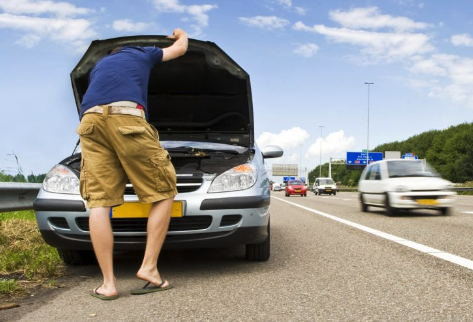Through the introduction of smart motorways this year (2018), it has left some confusion of what motorists are and aren’t allowed to do when it comes to the hard shoulder.
However, things don’t have to be so complicated. At CarCliq, we’re going to ensure you know the ins and outs of what you can do on the hard shoulder.
However, things don’t have to be so complicated. At CarCliq, we’re going to ensure you know the ins and outs of what you can do on the hard shoulder.
So, what is the hard shoulder?
On the motorway, you can find the hard shoulder along the edge of the motorways to the left of the left-hand lane. It refers to as the “shoulder” because it’s the attaching part of the road which connects to the land and the land is hardstanding, hence the given name “hard-shoulder”.
On the motorway, you can find the hard shoulder along the edge of the motorways to the left of the left-hand lane. It refers to as the “shoulder” because it’s the attaching part of the road which connects to the land and the land is hardstanding, hence the given name “hard-shoulder”.

This part of the motorway is a standard width of 3.3m and is distinguished from the motorway’s driving lanes by a solid white line, in comparison to the other dotted lines.
When is it acceptable to drive on the hard shoulder?
In almost every occasion, it is illegal to drive on the hard shoulder of the motorway and it will consequence with a punishment given by the police. Although, there are some exceptions which can be made to this rule.
When is it acceptable to drive on the hard shoulder?
In almost every occasion, it is illegal to drive on the hard shoulder of the motorway and it will consequence with a punishment given by the police. Although, there are some exceptions which can be made to this rule.
- If a traffic police officer or Highways Agency patrol officer directs you to go into the hard shoulder lane it is acceptable to do so. The reason may be due to the occurrence of an accident on the road ahead.
- Roadworks is another exception; pay special attention to any yellow signs which direct you to use the hard shoulder and as soon as you are aware the roadworks have finished you need to move into the next driving lane as soon as possible.
- Lastly, the final exception is if you’re on a smart motorway. Smart motorways open the hard shoulder so motorists can use it to drive on – this is indicated on the signs. However, if you’re unsure on whether you are on a smart motorway, please do not use the hard shoulder.

What is the purpose of a hard shoulder?
Back in the 1960s, motorways were first introduced across the UK along with the hard shoulder on all routes for two reasons.
Back in the 1960s, motorways were first introduced across the UK along with the hard shoulder on all routes for two reasons.
- It acts as a refuge for any broken-down vehicles, so it’s away from other flows of traffic to reduce congestion.
- This can also act as an emergency lane for emergency vehicles to bypass the ongoing traffic, so they can get to the scene of an accident quicker.
Am I able to pull over on the hard shoulder?
This should be your absolute last resort, as pulling over onto the hard shoulder is very dangerous and can lead to serious circumstances. According to Highways England, over 100 people are killed or seriously injured on hard shoulders every year. If you need to stop, park to the far left of the road and put your hazard lights and sidelights on to warn other drivers your car is stationary. When getting out the vehicle as well, you need to use the left-hand doors before waiting behind the barrier.
This should be your absolute last resort, as pulling over onto the hard shoulder is very dangerous and can lead to serious circumstances. According to Highways England, over 100 people are killed or seriously injured on hard shoulders every year. If you need to stop, park to the far left of the road and put your hazard lights and sidelights on to warn other drivers your car is stationary. When getting out the vehicle as well, you need to use the left-hand doors before waiting behind the barrier.

The RAC recommends if you need to stop your vehicle on the motorway, try to leave as soon as possible and find a safe place away from the highway – this could be a motorway junction or a service station.
Stopping at a hard shoulder should only be for a mechanical breakdown or a medical emergency only, or as mentioned previously if an authoritative figure (like a police officer or Highways Agency patrol officer) directs you to do so.
Stopping at a hard shoulder should only be for a mechanical breakdown or a medical emergency only, or as mentioned previously if an authoritative figure (like a police officer or Highways Agency patrol officer) directs you to do so.
Emergencies do not include the following: making or receiving phone calls, going for a toilet break or needing a rest because you’re tired. These can be done at a nearby service station.
To conclude, the penalty for inappropriately driving on the hard shoulder includes a charge of a £100 fine and 3 points on your license. Therefore, be smart and only use the hard shoulder when appropriate.
For more CarCliq guides click here
For more information on smart motorways click here
For more CarCliq guides click here
For more information on smart motorways click here